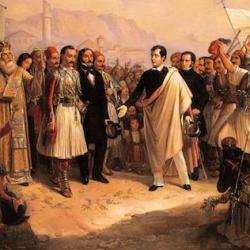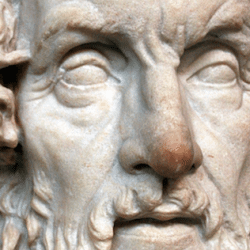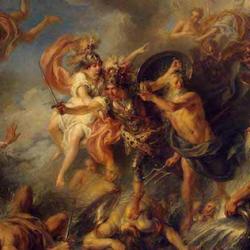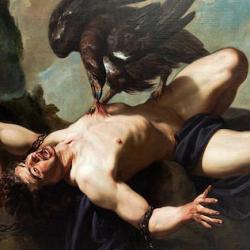In a recent book on Roman images, Tonio Holscher notes that Roman artists borrowed from every phase of Greek art because all phases of Greek art were available simultaneously. According to the TLS reviewer of his book (May 12), “In Greece, these styles had evolved over time, from the stiff Archaism of the sixth century BC, through the restrained naturalism of the high Classical era in the fifth century, to the pathos of Hellenistic art in the fourth and third centuries. To the Romans, however, these stylistic models were available simultaneously, and they connoted not discrete historical epochs, but a range of contemporary values.”
Thus, “Much as nineteenth-century church-builders looked to Gothic models for their ethereal spirituality, and bank-builders turned instead to Classical models for their connotations of authority and stability, so Roman artists chose particular Greek styles in accordance with the needs of their subject matter.” Roman depictions of war, for instance, employ “Hellenistic models, with their death-throe grimaces and swirling melees.”















